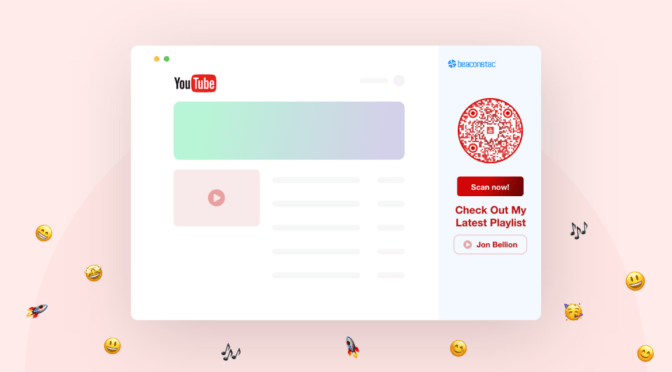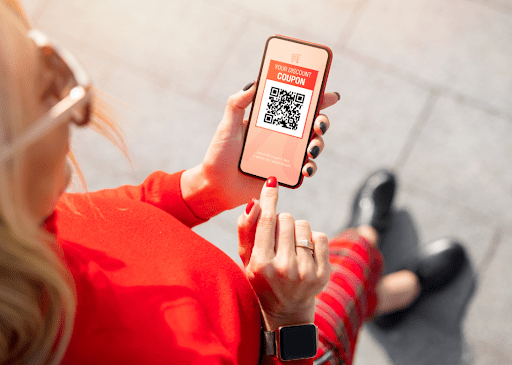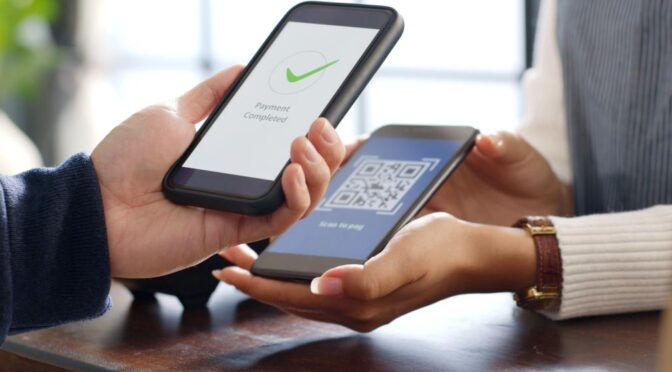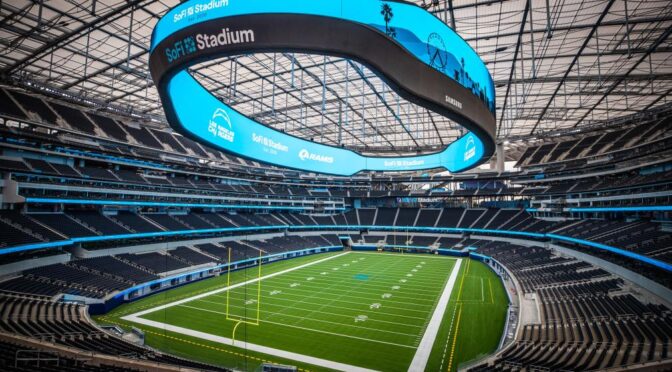Someone was walking their cat when they first noticed it. Others learned about it on TikTok and rushed to see it in person. “It is a marriage proposal that will be revealed soon,” a person predicted. Another quipped, “Stuff like this is for us to get excited.”
These are Swifties trying to decode Taylor Swift’s latest album teaser: supersized QR Code murals in Chicago and other cities in the US and 13 other locations! It came just a week before her new album, The Tortured Poets Department (TTPD), was launched on April 19.
The QR Code campaign was something Swift hasn’t done in recent memory, and it triggered an avalanche of fan fiction, spurred a tranche of news cycles, and ignited a social media discourse. From a marketing standpoint, the campaign was an execution brilliance and a case study of using QR Codes for an omnichannel campaign. Millions engaged with the campaign, generating much buzz for days before the album’s release.
If you watched the saga unfold and wondered if a QR Code campaign like this could work for you or how to use QR Codes for a campaign like Swift’s, you’re not alone. As someone in the marketing business, I couldn’t resist the urge to decode Taylor Swift’s campaign.
Let’s see what made the TTPD QR Code campaign successful and what lessons you can take for your business.
Table for contents
Decoding Taylor Swift’s campaign—from the larger picture to the QR Code
Before we proceed, it’s important to underscore that no campaign can succeed without a solid foundation, which, in the case of Swift, is her stardom and deep connection with her fans.
So, the success of this QR Code campaign isn’t an isolated event and is intricately linked to these factors. Keeping this in mind, let’s see what went into making Taylor Swift’s campaign in a bird’s eye view:
🪄 She innovates (QR Codes!?)
What was unusual about the TTPD teaser was that it used dynamic QR Codes as Easter eggs, which Swift didn’t use in recent memory—at least not on a scale like this campaign.
Instead of taking the usual way of dropping cryptic content on digital channels or outdoor advertisements, Swift’s latest campaign bridged the online and offline worlds and added an extra layer of mystery using QR Codes.

Swift’s team used dynamic QR Codes, which powered the campaign’s Easter egg strategy. For instance, the first Swifties who rushed to Chicago’s River North neighborhood to scan the QR Code found that it led to an unlisted YouTube Short on Swift’s channel. The video had a typewriter typing “Error 321,” and some even spotted a faded “13” (Swift’s lucky number).
But the content changed every day following the mural’s unveiling.
Two days later, people who scanned the same QR Code found a separate YouTube Short; this time, the typewriter typed the letter “T.”
So copy dynamic QR Codes (more on them later), which add a layer of innovation to otherwise static billboard ads.
🤔 She eats intrigue for lunch and dinner
Think about scanning a QR Code to find a typewriter typing a single letter! Now imagine QR Codes around the world redirecting to similar videos where typewriters type different letters. Swifties are accustomed to the cryptic teasing style that Swift has mastered over the years. In the TTPD QR Code campaign, she has outdone herself.
Apparently, Swift’s crew used QR Code murals in several cities in the US and 13 other locations worldwide. They all led to unlisted YouTube Shorts that revealed a different letter. For instance, a QR Code in Brazil’s Sao Paulo had the letter “H.” Another ad in London had “O.”
It didn’t take much time for Swifties to realize that the letters, when synchronized, revealed the word “Fortnight,” which is the name of the first single in the TTPD album.

The megastar is omnipresent on social media and uses a sudden absence to boost her mysterious aura. For instance, before the launch of her Reputation album in 2016, which followed a high-profile feud with Kanye West, Swift went radio-silent on social media for some time, only to reappear with posts of lone black snakes on Instagram.
Swifties quickly interpreted the snake as a symbol of the assault on Swift’s reputation due to the feud, which is also widely considered the central theme of Reputation.
“If she never became a singer,” a fan wrote on X, referring to the TTPD QR Code campaign, “she would’ve become Jigsaw in real life!”
So, copy intrigue as an ingredient for marketing success.
📈 She is consistent enough to break it for her benefit
Swift is known for her pre-release buzz. So, meticulously planned content, strategically placed across channels that work together as a part of a more extensive campaign, is very Swift-like and consistently so.
Because of her record of consistency, the pop star could break this cycle and benefit from it. For instance, Swift released two consecutive albums in 2020—Folklore and Evermore—without any pre-launch hype. To everyone’s surprise, the albums dropped shortly after being announced on social media, which is atypical of Swift.

Swifties received the recent QR Code murals with a lot of frenzies because the campaign breaks the monotony—Taylor Swift has never used a QR Code Easter egg before. And it’s safe to say that her fans were exalted.
“I can’t even begin to comprehend how involved this all is,” a fan marveled about the QR Code campaign on X (formerly Twitter).
Copy consistency and breaking it once in a while to reinforce the intrigue.
🤗 She nurtures a community of highly engaged Swifties
Swift has 282 million followers on Instagram as of the time of writing this post. Her YouTube clocks at 58.2 million, and she has 110 million followers on Facebook and TikTok combined. What is remarkable is how Swift keeps these nearly 500 million Swifties stay put.
Due to Taylor Swift’s constant communication, fans pounce on every detail the artist shares on her social media. Her posts routinely receive hundreds of thousands to millions of comments, so theorizing over a cryptic ad launched just before an album release is not new. The instant fan frenzy over anything the artist shares, online or offline, results from her community of highly engaged fans.
For instance, Swift shares personal accounts behind the lyrics of her songs simultaneously on all text-based social media. She also shares behind-the-scenes of her music video shoots on YouTube and Instagram.
Recently, she wrote a detailed Facebook post about the surprise collaboration with Post Malone on the Fortnight album. She also updates Swifties on album vinyl and other goodies as they become available in stores.

Taylor Swift updates her fans on the performance of her new releases and thanks them for their unwavering support when her works break charts. In short, Taylor Swift engages with her fans in an interpersonal way.
Swift’s coveted Secret Sessions have a fanbase of its own. Swift invites handpicked Swifties to her houses or a hotel for a pre-launch album screening session. She reportedly did the same during the launch of Reputation, Lover, and 1989.
“When people wonder why Swifties are so crazy, THIS is why,” a Swiftie wrote on X, referring to the TPD QR Code campaign. “I don’t see any other artists putting this much detail/interaction/engagement into promo!! SHE IS AN ICON.”
Can anyone disagree?
Copy engagement with the audience as a booster for any marketing campaign.
6 Essentials for a QR Code campaign like Taylor Swift’s
Let’s be honest: it’s not entirely possible to replicate a megastar’s campaign for, say, a business. Moreover, the QR Code alone wasn’t the reason for the hype. Swift as a brand, her community, and her body of work together gave the campaign a huge lift—something that might be inaccessible even for the most prominent businesses.
Luckily, the basic principles of successful marketing with QR Codes remain the same, which is what we’ll be taking away from Swift’s recent campaign:
1. Secured dynamic QR Codes
If there is one OG pillar of Taylor Swift’s TTDP campaign, it’s the dynamic QR Code. This campaign wouldn’t have been possible without it.
Remember how the QR Code mural in Chicago linked to different content on different days of the week? This was because Swift’s team strategically used dynamic QR Codes to change the content and drop new Easter eggs from the same billboards over time.
You can update dynamic QR Codes in real time to redirect to a new link without changing the QR Code itself. This is not possible with static QR Codes.

If you intend to launch an outdoor campaign using QR Codes, static QR Code isn’t an option. Moreover, Taylor Swift’s team will be able to measure the engagement data from the QR Codes, which is possible only with dynamic QR Codes. The first-party data generated using QR Code scans is invaluable for understanding audience (customer) behavior and strategizing future campaigns.
Another essential factor to note here is the size of the QR Code! Since Swifties could scan the QR Code on the building wall from the streets, this indicates that the QR Code size was optimal and that the print was high-resolution. Maintaining an optimal QR Code size and resolution is important for the best scannability.
Lastly, whatever QR Code ecosystem you use must be secured with the highest security measures to prevent data leakage.
📦 Takeaway:
- You can use a dynamic QR Code generator such as Uniqode (👋 that’s us) to change the destination URL or content without creating a new QR Code. This way, you can strategize dynamic campaigns like Taylor Swift’s TTPD teaser.
- Experiment with a video (YouTube) QR Code, custom landing pages, audio QR Code, and other QR Code types that suit your campaign’s strategy. There’s a QR Code for all your needs.
- Maintain the ideal size of a QR Code on an OOH campaign: one-tenth of the scanning distance, which does not include the QR Code borders. For instance, if a QR Code is 10 meters above the ground (the scanning distance), it must be at least 3.2 feet in size.

2. A well-engaged community
Simply slapping QR Codes in a campaign may not translate into activation. In Taylor Swift’s campaign, a massive chunk of the success goes to Swifties, who are receptive to any content from their favorite star.
Even before the QR Code mural was fully unveiled in Chicago, Swifties began to notice it and post about it on social media. The community’s frenzy spread the word about the QR Code like wildfire across 12 time zones where similar QR Codes were placed. This fan frenzy on anything the artist shares came from a decade of relentless community-building (not to mention the TTPD campaign team must have done their research on understanding what channels Swifties would prefer).
Starting from Tumblr in her first decade to expanding her community into Facebook, Instagram, and TikTok, Swift has had the pulse on the ever-evolving digital trends. She has been where her fans have been.
If you’re trying to build a community for your business from scratch, start by identifying a problem you solve and building a community around it. This could be on social media as groups or forums on dedicated community sites such as Discord, Tumblr, Reddit, Slack, etc.
Data suggests that most consumers (76% of survey participants) want their favorite brands to have a community. The well-engaged community also creates an ecosystem of upselling, recommendation, and word-of-mouth promotions when a campaign is dropped. HubSpot found that 75% of consumers trust recommendations from their social circles.
For instance, in 2019, I worked for a plant-based magazine in New York. The magazine spawned from a Facebook group of over 50,000 American parents keen to raise their kids vegan.
The admins of the Facebook group realized there was enough demand among parents for plant-based resources and decided to launch the magazine. And it was a huge success! At my time, it peaked at 100,000 unique readers a month and had a successful media engine with paid sponsors.
📦 Takeaway:
- One of the easiest ways to engage your business community is by responding to messages or reviews on socials, Google, Yelp, etc., as quickly as possible. Quick and, most importantly, candid and human responses on socials boost the brand experience.
- Send direct mail newsletters with QR Codes to take your offline audiences to online resources for an omnichannel experience. See how DRMG—Canada’s biggest direct mailer—bagged 28,000+ engagements from a mail campaign spanning 200 cities.
- Arrange team-led social initiatives that benefit your community. These could be pop-up events in a local community or larger, arranged events elsewhere. Spread the word with postcards, newsletters, or posters with QR Codes to RSVP.
- See how an India-based non-profit uses registration QR Codes from its monthly magazine (PDF) to encourage its community to volunteer in upcoming events and outreaches.
- Launch giveaways, contests, loyalty programs, personalized offers, surveys, etc., using QR Codes from physical (OOH, posters, banners) and digital (electronic displays, emails, PDFs) touchpoints to engage the community.
- Incentivize the community with discounts, coupons, or early accesses—whatever matters to them.
3. Lots of mystery (Easter eggs)
Easter eggs are an excellent marketing tool if done correctly. QR Codes fit in this regard like hands fit a pair of custom gloves! Again, Taylor Swift’s recent campaign is an excellent example of harnessing mystery and QR Codes to build hype.
If you’re planning for a QR Code campaign, brainstorm a strategy to make it more exciting and mysterious.
For example, Coinbase, a cryptocurrency exchange platform, used QR Codes for a sense of mystery in their 60-second Super Bowl ad in 2022. A colorful QR Code—without any information—sprang around the huge Superbowl screen for people to scan.
Upon scanning, the QR Code took users to a promotional website offering discounts and a huge cash giveaway. The primetime QR Code garnered so many scans that Coinbase’s servers reportedly crashed.

In another example, Walmart-owned Flipkart, one of India’s biggest ecommerce players, used Uniqode’s QR Codes in cryptic ads for TV and print in a hugely successful marketing campaign.
Within an hour of launching the ad in print, one million people scanned the QR Codes on the front pages of some national dailies. Shortly after launch, Flipkart’s ad surpassed two million scans across TV and print—well beyond the expected response. Learn more about it here.

📦 Takeaway:
- Craft your campaign storyline around a mystery and use QR Codes to share hints, visuals, or snippets of information to build anticipation. Flipkart’s and Taylor Swift’s campaigns are good examples.
- Use a combination of channels—such as social ads and QR Codes on billboards—to share cryptic messages that come together to make the whole sense.
- Make the experience intriguing and action-oriented, such as using QR Codes for scavenger hunts, playing AR videos, quizzes, or games. Indian bakery giant Britannia surprised the nation with a QR-based print ad that came alive with mixed reality on a mobile device upon scanning.
- Use a QR Code management solution to create and manage QR Codes for your campaign on a single dashboard and measure their performance.
- Have a solid execution strategy with a defined customer journey, polished CTAs, a high-performing backend, and a secured QR Code generator.
4. A sustainable and unique brand identity
Successful marketing campaigns are closely connected to the brand’s unique identity. A unique brand identity creates differentiation, brand resonance, and connection. For instance, Taylor Swift cracked the cryptic teasing style better than many artists, and this is now her identity.
Cryptic and symbolic teasers about her new album have been iconic since her 2006-2008 debut and Fearless Eras. The Teardrop On My Guitar music video in 2006, for example, featured a school locker with the number 13, possibly foreshadowing her lucky number. The number 13 was apparently evident in this year’s TTPD QR Code teaser.

Fifteen years on, you can still relate Taylor’s personality to her recent campaign.
In the TTPD campaign, the QR Code accentuated her iconic teasing style. Despite using QR Codes for the first time, the campaign received much hype because Swifties could instantly relate it to Swift teasing them.
Nike is another excellent example of a sustained brand voice that fueled the company’s growth, although they famously reshuffled their brand identity.
In its ads, the company initially promoted styles and tech-heavy footwear values. But the iconic “There is no finish line” campaign changed everything. The ad, featuring a lone runner and the motivational tagline, shifted the brand’s focus from shoes to the spirit of running.
Suddenly, people weren’t buying Nike for sports alone; the brand became a lifestyle movement as we know it today. Since then, Nike has steadfastly maintained its brand identity in everything it does. Their iconic “Just do it” tagline is a testament to the continued legacy that began decades ago.

📦 Takeaway: You don’t need a specific brand identity to use QR Codes successfully. Nevertheless, whatever your brand stands for—objectively or aspirationally—nurture a style uniquely yours in the tone of voice, marketing (including QR Code campaigns), design, etc., and maintain it throughout your metamorphosis as a brand. With a sustained brand voice, your campaign will click with your audience.
5. Custom QR Codes that work flawlessly
In Taylor Swift’s campaign, the QR Code appeared printed using tiny letters “TTPD” and “13” on large acrylic sheets. The QR Code was basic, and had no clue about its content whatsoever (which was the strategy).
Unlike Swift’s campaign, whose association with the QR Code is a big enough call-to-action, you may need a QR Code with some CTA. For instance, it could be a logo, a “Scan to register” text, a distinct QR Code pattern—or anything to make it more recognizable.

In such cases, you need a QR Code generator to customize the QR Code while creating it—from colors to shape, pattern, eyes, and more. During this time, rendering a QR Code less scannable is possible. QR Code generators like Uniqode offer real-time scannability scores and previews to test-scan the QR Code as you design for a highly scannable final print.
You must also be able to download the QR Code in file formats suitable for large-scale printing, such as EPS or SVG. JPG and PNG QR Codes cannot scale without distorting the dimensions required for outdoor printing.
Finally, the tech infrastructure must be solid to support a large-scale QR Code campaign. The last thing you want is servers crashing due to a high volume of scans.
📦 Takeaway:
- Use a custom-designed QR Code with your brand’s color and logo to make it more recognizable.
- Add a CTA to your QR Code campaign so people know why they must scan. Taylor Swift’s album name was a strong CTA. In your case, CTA could be “Scan for discount.”
- While customizing a QR Code, ensure that its scannability is intact. Use Uniqode’s real-time scannability score on the dashboard.
- Always print the QR Code in dimension-appropriate file format. Learn more about the QR Code file format here.
- To avoid any untoward situation after the campaign is live, choose a QR Code platform with high up-time, which is a choice of thousands of enterprises and offers 24/7 multi-channel customer support.

6. An integrated and omnichannel campaign
Taylor Swift’s TTPD campaign was a prime demonstration of a well-thought-out omnichannel marketing campaign that extended well beyond the digital. It involved a mix of channels to engage people at every stage and build the hype.
Here’s a rough timeline of how Taylor engaged her fans across channels since announcing her album:
🌟Hours before Swift receives the Grammy, her website goes all-black and shows a mysterious message.
🌟Taylor Swift announces The Tortured Poets Department during her acceptance speech at the Grammy Awards.
🌟Swift posts the cover art of the album within minutes of going backstage after collecting her award. “All is fair in love and poetry,” she captions the Instagram post.
🌟 Instagram adds a new scroll-down-to-refresh animation with the countdown for her album release. Talk about building hype!
🌟Throughout February, Swift posts updates on the album on her social media. Sometimes, she creates an Apple Music playlist and, sometimes, a Spotify pop-up in physical venues.
🌟Then comes the QR Code mural a week before the launch. Its content keeps changing, revealing a new clue every day.
🌟After the QR Code mural goes live worldwide, including at shops and cafes, Swift releases a cryptic video on her Instagram titled “TTPD Timetable.” The video culminates into more hints.
🌟 With hours before the launch, she releases official merchandise that sells out like crazy, and also gives a sneak peek into the Fortnight music video.
As you can see, Swift juggled multiple online and offline channels—the Grammy stage, the official website, socials, physical stores, and OOH ads—to share bits and pieces of content about the album. For the Swifties, picking up on the hints and piecing them together was an exhilarating experience.

The result of the omnichannel campaign was HUGE in every possible way. Even in a digitally-native era, Swifties bought 700,000 vinyls within the first week of the sale, Billboard reports.
If you’re planning a QR Code campaign, don’t just limit it to physical media. Use it along with an omnichannel distribution strategy to capture more attention and add an element of fun to it. See how TikTok nailed an omnichannel campaign using QR Codes 👇

TikTok launched its “Find the Unsigned” campaign in the UK, which featured unspecified QR Codes in OOH ads. Each ad led to an unsigned artist on the platform, which users had to find by scanning the QR Code. This way, TikTok exposed a specific community of content creators to those who probably wouldn’t discover them on the app.
📦Takeaway:
- Use dynamic QR Codes to connect online and offline channels for an omnichannel campaign. For example, use social media QR Codes from postcards, banners, flyers, digital displays in cabs, trains, etc.
- Go further with Smart QR Codes for condition-based outcomes from your campaigns, giving users an immersive experience. For example, you can set a Smart QR Code to reveal new content for each unique scan.
- Share multiple links with your audience using Linkpages. For instance, if you’re running a music video ad, use the Linkpage QR Code to share behind-the-scenes a personalized message by the creators and a feedback form, along with the music video—all from the same page.

Create, manage, and launch your next successful QR Code campaign
Taylor Swift’s TTPD campaign is an excellent example of the potential of QR Code in omnichannel marketing. You can easily create a QR Code campaign like Swift on Uniqode.
The best part is that all the QR Codes placed across 12 time zones will collect scan data, giving insights into the campaign’s performance based on location, time, date, etc. Swift’s team could use this first-party data for more interesting future campaigns (which we can’t wait to see!).
Are you ready to use QR Codes in your omnichannel marketing strategy? On Uniqode, you can create your first QR Code in just four steps.
Cover image credits: Taylor Swift cutout via Goodfon (CC); Background image by Courtney Sisk (X, formerly Twitter). No copyrights intended.

















